

Explore the extreme forces at work along the Columbia River Bar. Learn about waves that can exceed 40 feet in height during the most severe winter storms. See exciting exhibits on the U.S. Coast Guard and the Columbia River Bar Pilots. Witness the legendary salmon fishing runs and take a tour of a floating lighthouse, the lightship Columbia.

This exhibit takes an exciting look at the legendary Columbia River entrance, where the forces of the mighty Columbia River and Pacific Ocean meet to create one of the most dangerous bar crossings on the planet.
The coastline of the Pacific Northwest is no stranger to violent winter weather, but nothing can compare to the extreme forces at work along the Columbia River Bar. Here, waves can exceed 40 feet in height during the most severe winter storms.
“The new exhibit features dramatic, never-before-seen video of rough water passages captured while working with the U.S. Coast Guard and Columbia River Bar Pilots during fierce winter storms,” said Senior Curator Jeffrey Smith. Also on display is a rare bar pilot pulling boat that was used for decades to transfer pilots to ships. This historic boat is from the Museum’s collection.
Since the days of the earliest explorers, hundreds of vessels have been lost to the fury of the Columbia River Bar. A dramatic interactive shipwreck map shows the terrible loss the wind and waves have caused over the last 200 years at this location.
This exhibit promises a full interactive experience for all visitors, and a great adventure for the entire family.
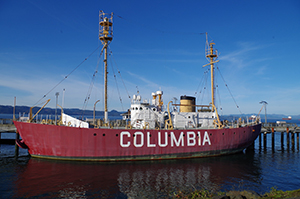 Lightship Columbia provides visitors a rare opportunity to walk the decks of a historic ship maintained in its original condition. A tour of Columbia (included with your admission) is considered by many to be a highlight of the Museum experience.
Lightship Columbia provides visitors a rare opportunity to walk the decks of a historic ship maintained in its original condition. A tour of Columbia (included with your admission) is considered by many to be a highlight of the Museum experience.
The Columbia served as a floating lighthouse, marking the approach to the treacherous Columbia River Bar, from 1951-1979. Its sailors endured days of boredom and days of terror, with 20-plus-foot seas and 60-knot winds not uncommon in winter, to ensure that ships and fishing vessels could safely navigate to port.
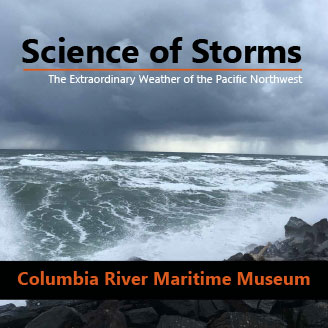
Here in the Pacific Northwest we experience extraordinary weather, and mariners have always had a vested interest in accurately recording and predicting the weather. Often their lives and livelihoods depended on it. This exhibit will look at our extraordinary weather and the ways that science and technology have addressed the challenges of predicting the weather.
Visitors can try their hand at giving a weather forecast, see themselves as rescuers would using infrared vision technology, view the earth from space and see storms over the vast Pacific, and experience hurricane force winds in a hurricane wind simulator.
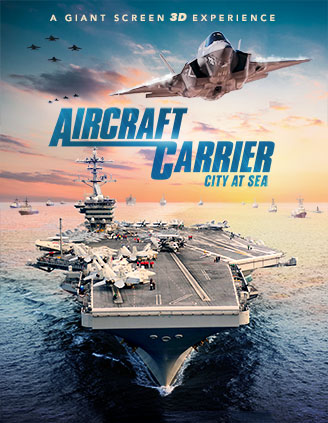 The mission to protect and defend the world's oceans has become far more complex and challenging in recent years, and naval aviation has become increasingly vital to success. One of the greatest engineering feats in the history of warfare, the modern Nimitz-class carrier is a masterpiece of technology, and the flagship of the fleet. With RIMPAC, the world’s largest and most comprehensive international maritime training exercise providing a stunning visual context for the story, find yourself aboard the USS Ronald Reagan alongside the 5,000 highly skilled sea and air personnel conducting flight operations in the midst of the simulated war exercises taking place there. Rarely has there been a topic so visually suited and compelling for IMAX® and other giant screen theaters. Runtime approximately 20 minutes. Visit the film website.
The mission to protect and defend the world's oceans has become far more complex and challenging in recent years, and naval aviation has become increasingly vital to success. One of the greatest engineering feats in the history of warfare, the modern Nimitz-class carrier is a masterpiece of technology, and the flagship of the fleet. With RIMPAC, the world’s largest and most comprehensive international maritime training exercise providing a stunning visual context for the story, find yourself aboard the USS Ronald Reagan alongside the 5,000 highly skilled sea and air personnel conducting flight operations in the midst of the simulated war exercises taking place there. Rarely has there been a topic so visually suited and compelling for IMAX® and other giant screen theaters. Runtime approximately 20 minutes. Visit the film website.

Sea Turtles are some of the most majestic and ancient creatures on Earth. For over 100 million years, they have traversed the seas, surviving multiple mass extinctions and playing critical roles in maintaining healthy, marine food webs. Not only do these friendly animals captivate us as they peacefully glide through the ocean, but their personal journeys of survival are equally fascinating. These remarkable reptiles will traverse thousands of kilometers of open ocean for as long as 50 years and then, from half a world away, migrate, with mysterious precision, back to the very beach where they were born -- to lay eggs that are the foundation of the next generation. With the turtles guiding us, our crews voyaged the same thousands of kilometers to capture the wonders of their habitats. Encountering many kinds of strange and compelling creatures from enormous breaching whales to the coral wonderland of the Great Barrier Reef -- all have been filmed in stunning 3D - so that playful sea lions, tiny sea horses and vibrant clown fish will float right out into the theater. Sea turtles remind us just how interconnected we all are in this amazing world and audiences will be moved to cherish them even more.
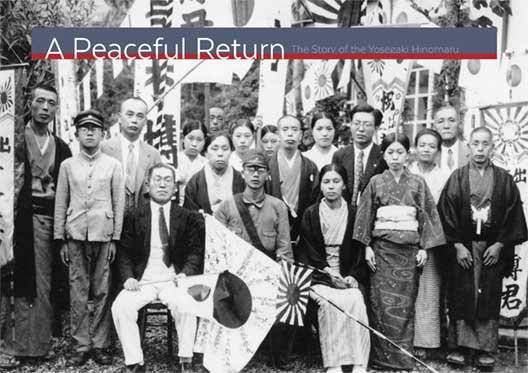
Japanese soldiers in World War II carried with them a very personal memento into battle: Yosegaki Hinomaru. These flags, covered with signatures and well-wishes for a safe return, were given by family and friends to the soldiers as they were sent off to war.
American soldiers in World War II collected flags from the bodies of Japanese combatants to take home as souvenirs. Now, decades later, many veterans and their families are realizing that these flags might be the only tangible evidence of a beloved family member lost in a war fought long ago.
Although these Japanese soldiers never saw their families again, their flags are now returning home.
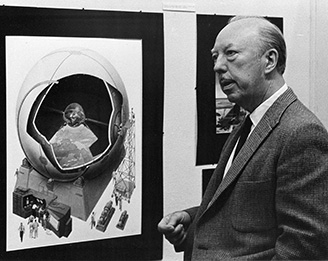
Artist Rolf Klep stands in front of one of his space flight illustrations at a 1969 University of Oregon Museum of Art retrospective exhibit.
Before he poured his energy and passion into founding the Columbia River Maritime Museum, Rolf Klep enjoyed a highly successful career as a commercial artist and illustrator. Klep’s works featured prominently in many of the most popular magazines (Newsweek, Colliers, Life, Look, Women’s Home Companion among many others) during his productive period of 1927-56. His works covered a wide range of subject material, particularly maritime, and in the 1950s, space travel and exploration. The Museum’s new exhibit will feature examples of these as well as his work as an author and illustrator of published books.
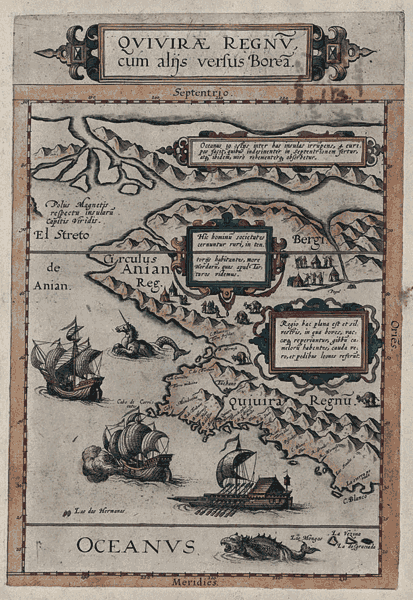 Promising unimaginable possibilities of wealth and power, yet whisper-thin, these maps were coveted secrets of the world’s grandest empires. They are now a record of greed, hunger, faith and hope.
Promising unimaginable possibilities of wealth and power, yet whisper-thin, these maps were coveted secrets of the world’s grandest empires. They are now a record of greed, hunger, faith and hope.
The European Renaissance and the Age of Enlightenment were periods of unprecedented expansion of human knowledge. Few gains were greater than in the understanding of the geography of the world.
The Pacific Coast was the last region to be explored, proving to be full of great hardship and promise.
These maps illustrate 260 years of discovery; the earliest is 460 years old. The maps are the gift of Henry and Holly Wendt. Welcome to terra incognito – land unknown.
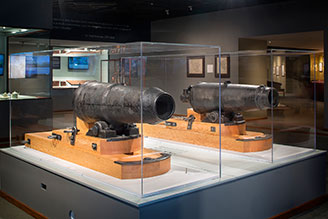
On Presidents' Day weekend in 2008, Oregon teen Miranda Petrone and her father, Mike Petrone, were beachcombing on the beach near Arch Cape in Clatsop County when she noticed a misshapen lump of rock and remarked how much it looked like a cannon.
That one moment kicked off the discovery of two 19th century cannon. It resulted in six years of restoration work, leading up to the planned public unveiling of the never before displayed artifacts at the Columbia River Maritime Museum in Astoria.
The two cannon are a specific type called a carronade. They were part of the 1846 wreck of the USS Shark, a US Navy vessel that ran aground on the Columbia Bar as it attempted to leave the Northwest after touring the territory.